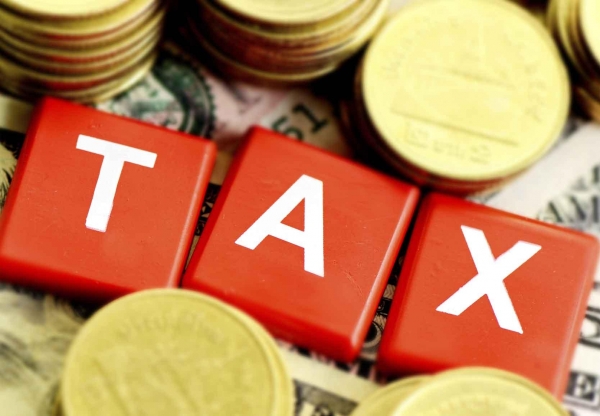Faceless e-Assessment Scheme for Taxpayers: Challenges and impact on the Indian tax administration
The consequence of this scheme is that taxpayers would not be linked to a specific territory, jurisdiction, or appraisal office, since the Central Board of Dire
- by B2B Desk 2020-08-21 05:56:50
Over the past few years, the government has taken various measures to transform direct and indirect taxes. The objective was to create a friendly ecosystem for taxpayers offering greater transparency, simplification, and ease to comply with tax compliance. The introduction of the Faceless e-Assessment process by the Central Board of Direct Taxes (CBDT) for income tax returns is a great step towards achieving the goal.
The faceless tax administration means the taxpayer himself or through any professional or through the representative, Assessee personally or physically needs to visit the tax office or face the tax authorities to carry out any settlement or appeal or any secondary tax administrative act.
The pretext was rightly set during the budget speech on July 5, 2019, and then, on October 7, 2019, the e-assessment system was by the Finance Minister. On August 13, 2020, the Prime Minister of India launched a transparent tax platform " Honouring the Honest" platform which lists the rights of those who are restricted by law under the Income Tax Act. As announced by the Secretary of State, the e-assessment scheme as announced by the FM will be known as the Faceless Assessment Scheme.

The consequence of this scheme is that taxpayers would not be linked to a specific territory, jurisdiction, or appraisal office, since the Central Board of Direct Taxes initiated a completely anonymous, randomized and electronic valuation scheme, eliminating all human interfaces. The National Center for Electronic Assessment (NeAC) has been enabled to be the main communication portal between taxpayers and tax authorities. The National Center for Electronic Assessment (NeAC) has been established and will be based in New Delhi. Additionally, regional e-assessment centers in 20 cities, including Delhi, Mumbai, Kolkata, and Chennai, under the faceless assessment scheme, notified on August 13, 2020.
Under the new system, taxpayers will not have to visit territorial jurisdiction tax officials of the regional authorities or the income tax department when they receive audit or tax assessment notices. The National Center for Electronic Evaluation must send a notice to the evaluator under Subsection (2) of Section 143, describing the problems related to the selection of your case for evaluation. The resident may, within fifteen days following the date of receipt of the notification referred to in Clause (1), submit her response to the National Center for Electronic Evaluation. The procedures are detailed in Notice No. 60/2020 of August 13, 2020.

All communications between the National e-assessment Centre and the assessor or her authorized representative or any other person are exchanged exclusively electronically without any material interference. All internal communications between departments are exchanged between the National Center for Electronic Evaluation and the Regional Centers for Electronic Evaluation and the different units and between the team of authorities exclusively by electronic means. The notifications to be issued by the NeAC must have a document identification number and the process is designed in such a way that the IRS and the identity of the tax authority and the team.
It was the shift toward rationalization, simplification, greater transparency, easier management of tax problems, and creating an inclusive ecosystem that is friendly to taxpayers. The faceless e-assessment system for income tax, which is currently being piloted, is a prominent initiative to achieve these goals, and India is the first country to implement this system and this could help the country to deal with the problems current.
There will be some cases in which the Chief Commissioner or the General Manager in charge of the Regional Center for Electronic Assessment may agree to request a personal hearing based on their opinion in a case deemed appropriate to the situation. Subsequently, this hearing must be carried out exclusively through video conferencing, including the use of any communications application software that supports video telephony, in accordance with the procedure established by the CBDT.
With the implementation of the new assessment system, there will be a significant reduction in delays in tax assessments and audits because the system will automatically identify unwanted actions or compliance. Several units or teams will be created to evaluate, review, and verify tax requests or orders during the drafting phase before they are issued to the taxpayer. There will also be a specialized unit to assist in cases that require legal, industry-specific, or economic expertise.
This scheme takes away the power of regular assessing officers to conduct surveys and searches, which will also reduce unnecessary huge taxpayer harassment. The inspection and search authority can be carried out by investigation and tax deduction in the source wing, also after obtaining the legal permission of a senior official with the rank of director-general or chief commissioner.
The measure could eliminate gray areas from the tax administration and significantly reduce the pressure of tax claims and encourage voluntary tax compliance.
Source: Nokia launches new Media Streamer to rival Amazon Fire TV Stick

POPULAR POSTS
Loan EMIs to Drop as RBI Slashes Repo Rate - Full MPC December 2025 Highlights
by Shan, 2025-12-05 11:49:44
Zoho Mail vs Gmail (2025): Which Email Platform Is Best for Businesses, Startups, and Students?
by Shan, 2025-10-09 12:17:26
PM Modi Launches GST Bachat Utsav: Lower Taxes, More Savings for Every Indian Household
by Shan, 2025-09-24 12:20:59
$100K H-1B Visa Fee Explained: Trump’s New Rule, Clarifications & Impact on Indian Tech Workers
by Shan, 2025-09-22 10:11:03
India-US Trade Deal Soon? Chief US Negotiator Arrives in Delhi as Talks Set to Begin Tomorrow
by Shan, 2025-09-15 11:54:28
Modi Meets Xi: Trump’s Tariffs, Strategic Autonomy, and the Future of Asia’s Power Balance
by Shan, 2025-09-03 06:40:06
Google Claims Gemini AI Uses Just ‘Five Drops of Water’ Per Prompt, Sparks Debate
by Shan, 2025-08-22 12:34:27
RECENTLY PUBLISHED

Pine Labs IPO 2025: Listing Date, Grey Market Premium, and Expert Outlook
- by Shan, 2025-11-05 09:57:07

The Agentic Revolution: Why Salesforce Is Betting Its Future on AI Agents
- by Shan, 2025-11-05 10:29:23

Top 10 Insurance Companies in India 2026: Life, Health, and General Insurance Leaders Explained
- by Shan, 2025-10-30 10:06:42

OpenAI Offers ChatGPT Go Free in India: What’s Behind This Big AI Giveaway?
- by Shan, 2025-10-28 12:19:11

Best Silver Investment Platforms for 2025: From CFDs to Digital Vaults Explained
- by Shan, 2025-10-23 12:22:46





 Subscribe now
Subscribe now 